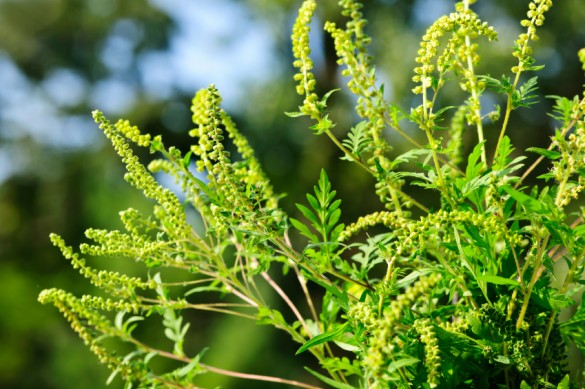
As allergy season rolls in for Middle Tennessee residents, a largely unknown adage rings true: the uglier a flower or weed, the more allergy-inducing its pollen tends to be.
Ragweed, mugwort, plantain and pigweed have more than just their unappealing appearance in common—they’re some of the worst offenders to allergy sufferers, said Robert Valet, M.D., assistant professor of Medicine and an allergist at Vanderbilt University Medical Center’s Asthma, Sinus and Allergy Program (ASAP) clinic.
Ragweed can produce up to 1 billion pollen grains per plant throughout a pollen season, according to the Asthma and Allergy Foundation of America. Of those allergic to pollen-producing plants, 75 percent are allergic to ragweed.
“The relationship between allergy-causing pollens and their flowers is something like a beauty pageant,” Valet said. “A general rule of thumb is that flowers that smell or look pretty attract insect pollenators, so they are not generally important allergens, because their pollen is not airborne. However, those that are very ugly or plain are meant to disperse pollen in the wind, which is the route most important for allergy.”
Valet says allergy season—divided into spring, summer and fall—runs from March to October and doesn’t end until the first hard frost.
Early spring is typically tree season, with common tree allergens including oak, maple, walnut, pecan and hickory. Valet notes that many people are concerned about fragrant and flowering trees like the Bradford pear and Crabapple, but they are not typically allergens as they rely on insects instead of the wind to carry their pollen.
In late spring and early summer, grasses start to pick up their pollen production. Of special note to allergy sufferers are Northern grasses including Timothy-grass, ryegrass and Kentucky bluegrass, and Southern grasses including Bermuda grass and Johnson grass.
In late summer and fall, the weeds make their presence known. Common weed allergens include ragweed, lamb’s quarter, pigweed, English plantain and mugwort.
This year the pollen count is proving to be high in Nashville, according to Valet.
“The pollen count may change from day to day, due to an event like rain—which decreases the pollen in the air temporarily—but once allergy season is underway, anything between a moderate and very high pollen count will aggravate allergy sufferers,” Valet said. “This season started later than last year’s, but since it has begun, the pollen counts have been high.”
Valet recommends that people with pollen allergies first try over-the-counter allergy medications before talking with their doctor about prescription medications and nose sprays.
“For people with known pollen allergies, everyday solutions can include taking an antihistamine before doing yard work and showering once back inside, and choosing the air conditioner over an open window when cooling their home,” Valet said.
If these measures do not relieve the symptoms, he suggests going to see an allergist to be tested for specific allergies and treated accordingly, with options including counseling about allergen avoidance, medications and allergy shots.












